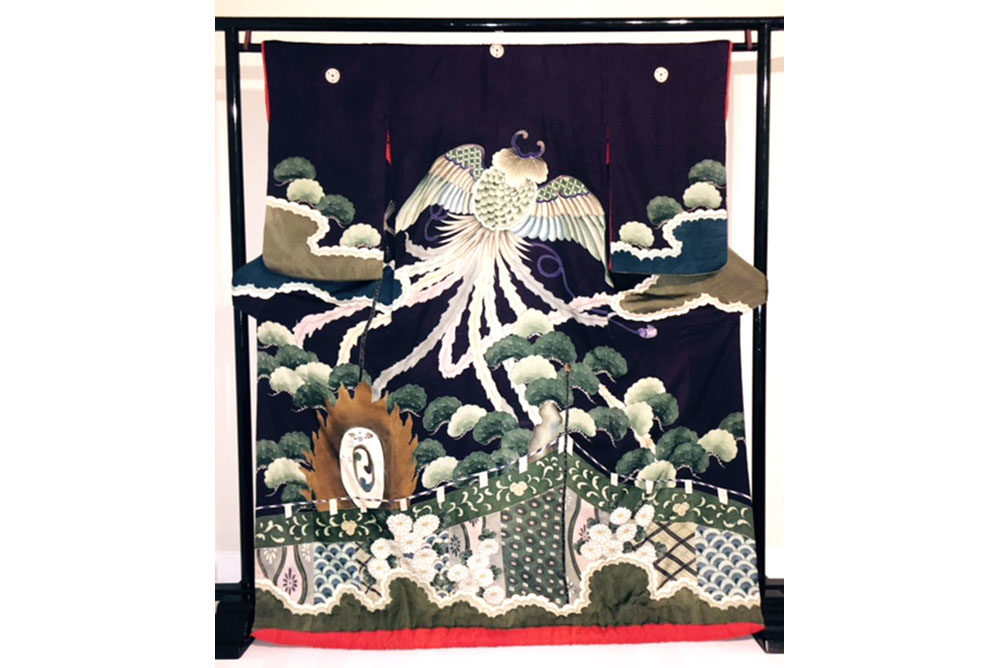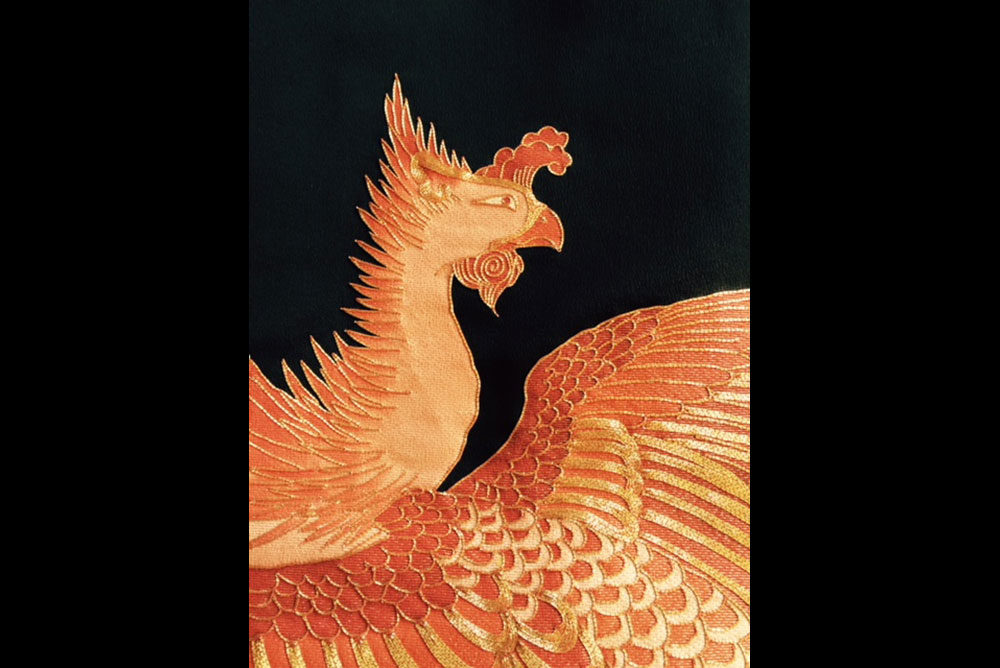
For an April 29 lecture at the Smithsonian Craft Show, textile scholar Ann Marie Moeller will discuss the kimono’s history and decode how it communicates information such as social class, marriage status, age, education, religious beliefs and a sense of humor through its design and patterns. / Photo courtesy of Anne Marie Moeller.

Japanese textile scholar Ann Marie Moeller has collected kimono since her student years at Harvard. / Photo courtesy of Ann Marie Moeller.
The lecture schedule includes “The Art of Ikebana Floral Design” (Friday, April 27, at 1:30pm). Bruce Wilson, a professor of comparative literature at St. Mary’s College of Maryland, who spends summers in Kyoto, Japan, studying the art of Japanese flower arranging, will demonstrate the ancient art, which dates back to the seventh century.
University of Pennsylvania professor Julie Nelson Davis will explain the history behind “Japanese Woodblock Prints and Painting” (Saturday, April 28, at 1:30pm), an art form that flourished from the 17th to 19th centuries, using the expressive images of kabuki actors and sumo wrestlers.
In her seminar “Japanese Kimono Textile Crafts” (Sunday, April 29, 1:30pm), Japanese textile scholar Ann Marie Moeller will decode kimonos. She’ll discuss how, thanks to skilled artisans, kimonos often rise to the level of art, as textile production continues to be a revered craft in Japan. Many of the labor-intensive textile crafts still used to make modern garments have also inspired American textile craftspeople to create unique interpretations of this Asian garment.
